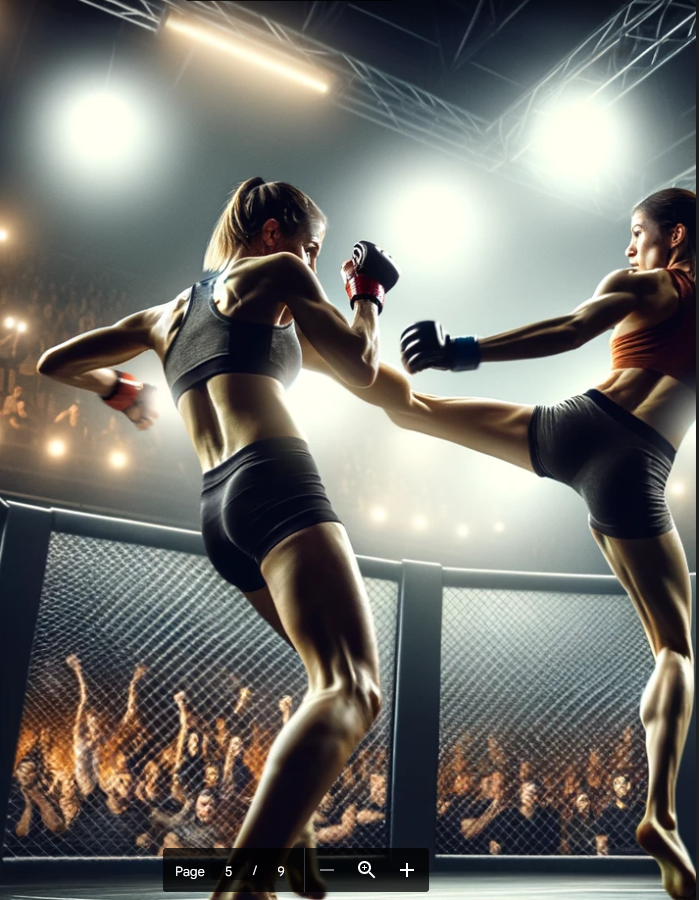The Challenges and Controversies Faced in the World of MMA Caused by the Current Gender Identity Discussion
Do you like Mixed Martial Arts (MMA)? Know it’s the kind of sport you can follow up with and bet on through https://www.playamo.com .
But today, the discussion goes ahead.Gender identity is now a major issue in society. It challenges old norms and asks big questions about fairness and the sport’s future. Society now sees gender in more complex ways. This affects many areas, including sports. MMA, with its tough demands and varied skills, is dealing with these changes. It’s trying to include all gender identities while keeping competitions fair.
The Current Landscape
MMA competitions were divided by gender into men’s and women’s divisions. This simple binary system is now seen as outdated. Society recognizes gender identity as a spectrum, not just male or female. Transgender, non-binary, and gender non- conforming athletes want to compete in ways that respect their identity. This situation is challenging for everyone involved, including regulatory bodies, competitors, and fans.
Challenges and Controversies
The inclusion of transgender athletes in MMA has sparked debate on several fronts. Supporters of inclusion believe everyone deserves to compete according to their gender identity. They highlight respect, equality, and human rights.
Critics worry about fairness and safety. Their concern is mainly with transgender women in women’s divisions. They talk about advantages like bone density, muscle mass, and strength from male puberty. These may not change, even with hormone therapy.
This debate isn’t just in MMA. It reflects broader talks about gender identity. Yet, MMA’s physical and combative style adds intensity. Safety and fairness are especially important.
Deeper Details about the Biological Factors
As said, the debate on transgender athletes in sports, like MMA, focuses on fairness and safety. This issue is rooted in biological differences. These differences are between people assigned male at birth (AMAB) and those assigned female at birth (AFAB). Key biological factors are often pointed out when talking about unfair competition.
- Muscle Mass and Strength: AMAB people usually have more muscle and are stronger than AFAB people. This is because of higher testosterone, which helps grow more muscle and strength. In MMA, strength is very important. So, when transgender women (AMAB) compete with cisgender women, it raises fairness concerns.
- Bone Density and Structure: AMAB individuals tend to have denser and larger bones than AFAB individuals. Broader shoulders and larger hands affect leverage and power in combat sports. Testosterone during puberty makes bones denser. This leads to more physical resilience. In sports with physical contact, this can be an advantage.
- Cardiovascular Capacity: Testosterone impacts hemoglobin levels. This changes how much oxygen the blood can carry, affecting endurance. AMAB people often have better aerobic capacity. They can be active longer. In MMA, endurance is key. This might give transgender women an edge over cisgender women.
- Reaction Time and Speed: Studies show that AMAB people usually react faster and move quicker than AFAB people. In MMA, fast reflexes and quick movements are important. They can decide who wins a match.
- Recovery and Injury Risk: Testosterone plays a role in muscle recovery and the risk of injury. AMAB individuals may experience faster recovery times and a different risk profile for certain types of injuries. This factor is particularly relevant in a sport that demands frequent and intense physical engagement.
Biological differences are common but vary by person. Also, transgender athletes on hormone therapy see changes. Their muscle, strength, and bone density can change. How much they change varies a lot. It depends on how long and what kind of hormone therapy they have.
Regulatory Responses
Some organizations are trying to make sports both fair and inclusive. The International Olympic Committee (IOC) has made guidelines. They say transgender women can join women’s categories if their testosterone is low for a year. Many MMA groups have similar rules, but there’s no one rule for all. These rules are meant to include more people fairly.
But, these rules are debated. People question if the testosterone limits are right. They wonder about the effects of male puberty on performance. Also, how to include non- binary and gender non-conforming athletes is unclear. They don’t fit simply into male or female groups.
Critics and supporters are divided. Critics think the rules don’t fully address puberty’s effects. Supporters see these rules as key steps toward fairness and including everyone.
Future Unfoldings
Looking ahead, the conversation about gender identity in MMA is likely to continue evolving, driven by broader societal changes, advances in our understanding of gender, and the experiences of athletes themselves. Several possible developments could shape the future of the sport:
- More Inclusive Policies: As understanding and acceptance of diverse gender identities grow, we may see more MMA organizations adopting inclusive policies that accommodate a wider range of athletes. This could include the creation of additional divisions or more nuanced criteria for competition eligibility.
- Technological and Scientific Advances: Continued research into the physiology of gender and the effects of hormone therapy could lead to more informed policies that better balance fairness and inclusivity. Technological advancements might also provide new ways to assess and ensure competitive equity.
- Increased Visibility and Representation: Transgender, non-binary, and gender non-conforming athletes gaining prominence in MMA could foster greater understanding and acceptance among fans and competitors, similar to the impact seen in other domains, like entertainment and politics.
- Legal and Regulatory Pressures: Legal challenges and governmental policies related to gender identity and sports participation may influence MMA organizations, compelling them to adapt their policies in response to legal precedents or new regulations.
- Community and Fan Engagement: The MMA community, including fans, fighters, and promoters, will play a crucial role in shaping the sport’s approach to gender identity. Open dialogue, education, and advocacy can contribute to a more inclusive environment.
Fighting Unfairness
Gender identity and MMA reflect a bigger change in culture. This change is about valuing gender diversity. MMA can show how competition and respect for identity can work together. To find this balance, we need more talks, research, and openness to change. The journey ahead is tough. Yet, it could lead to a sport that’s fair and welcoming for everyone.

